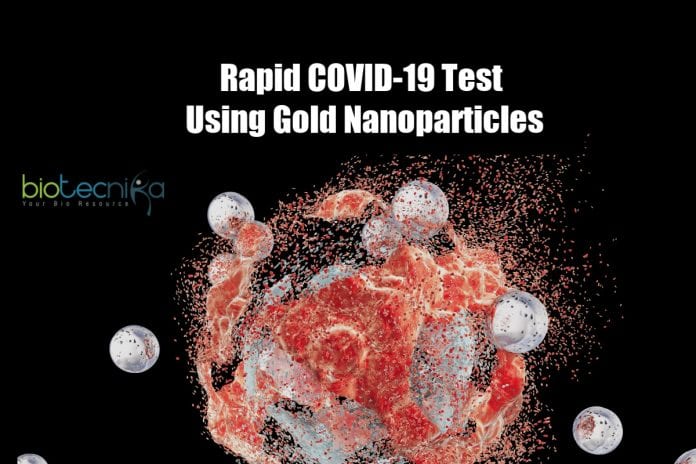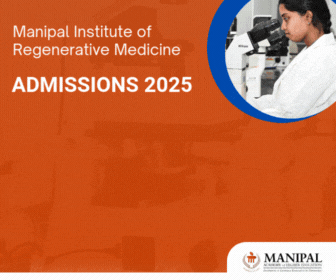Nanoparticle technique for rapid COVID-19 test
An experimental COVID-19 diagnostic test that can visually detect the presence of the virus in 10 minutes using nanoparticle technique was developed by the researchers from the University of Maryland School of Medicine (UMSOM). The test uses a simple assay having plasmonic gold nanoparticles to identify a color change when there is a presence of a virus. For analysis, the test does not need any kind of sophisticated laboratory techniques, such as those typically used to amplify DNA. The study was published in the journal of ACS Nano -an American Chemical Society’s nanotechnology journal.
Dipanjan Pan, study leader, Ph.D., Professor of Diagnostic Radiology and Nuclear Medicine and Pediatrics, UMSOM, said, “On basis of our initial results, we believe this new test might identify RNA from the virus as early as the initial day of infection. However, to verify whether this is indeed the case added research studies are needed”.
As soon as a nasal swab or saliva sample is obtained from an individual, using a basic procedure the RNA is extracted from the sample that takes just 10 minutes only. To detect a particular protein the test utilizes an extremely specific molecule affixed to the gold nanoparticles. This protein belongs to the SARS-CoV-2 gene sequence. The gold nanoparticles react by turning the fluid reagent from purple to blue when the biosensor binds to the virus’s gene sequence.
Dr. Pan said, “Being able to reliably detect any virus is the efficiency of any COVID-19 test. This implies it does not provide an incorrect negative outcome if the virus is actually present, nor an incorrect positive outcome if the virus is absent,” stated Dr. Frying pan. “Most of the analysis tests presently available can not detect the virus until a few days after infection. Due to this, those tests have a substantial rate of false-negative outcomes”.
A firm called VitruVian Bio was established by Dr. Pan to develop the test for industrial application. To discuss requirements for obtaining an emergency use permit for the test he plans to have a pre-submission meeting with the U. S. FDA the following month. The new FDA policy allows for the marketing of COVID-19 tests without needing them to undergo the normal process of approval or clearance. To ensure that these tests provide reliable outcomes, they need to fulfill particular validation testings.
Matthew Frieman, co-author, Ph.D., Associate Professor of Microbiology and Immunology, UMSOM said, “This RNA-based test seems very promising in regards to detecting the virus in the sample. The cutting-edge approach gives outcomes without the demand for an advanced lab”.
Even though more researches are required, this test could be more economical to develop and process than a standard COVID-19 laboratory test. This test does not require lab equipment or skilled workers to run and evaluate the test. This test can be used as a surveillance technique in childcare centers, nursing homes, schools, and work locations to monitor any resurgence of infections if this new test meets FDA expectations.
Research scientist Parikshit Moitra, Ph.D. of Dr. pan’s lab, research fellow Maha Alafeef, UMSOM, and Ketan Dighe, UMBC conducted the studies.
Dr. pan is a faculty member of the CBOTH – Center for Blood Oxygen Transport and Hemostasis and holds a joint appointment with the College of Engineering at the University of Maryland Baltimore County.
E. Albert Reece, MD, Ph.D., MBA, Dean, Executive Vice President for Medical Affairs, UM Baltimore, and the John Z. and Akiko K. Bowers Distinguished Professor, University of Maryland School of Medicine said, “This is another instance of exactly how our professors are driving advancement to fulfill an essential need to broaden the ability of COVID-19 testing”. “Our country will be counting on cost-effective, quick tests that can be distributed widely as well as used often until we have reliable COVID-19 vaccines“.
Author: Sruthi S






























